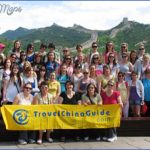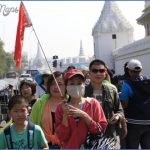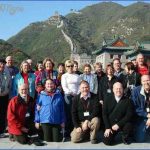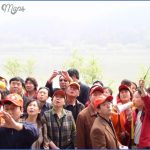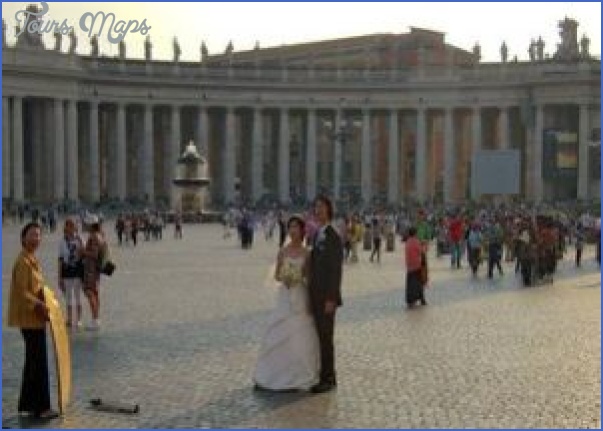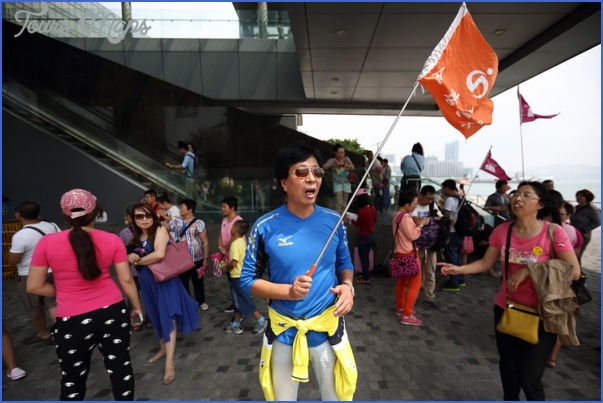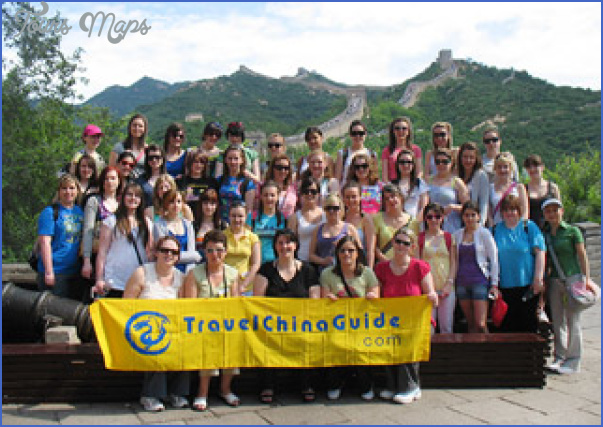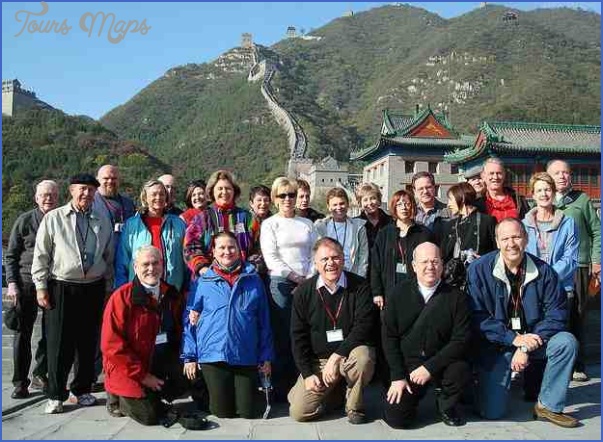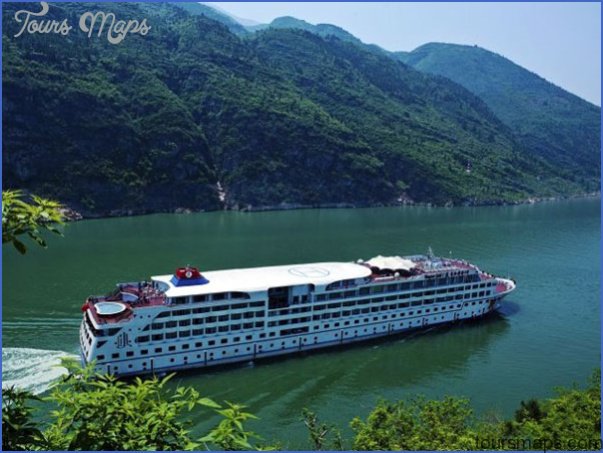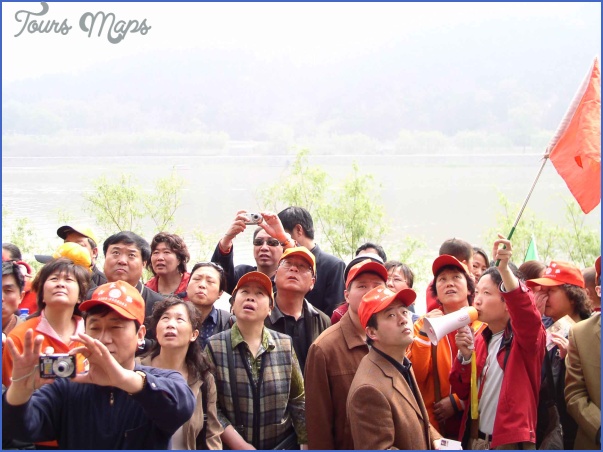The Huaqing Hot Springs are to be found 26km/16 miles east of Xi’an at the foot of Mount Lishan in a large park containing a number of public baths and some modern palaces built in the Tang style. The hot springs, rich in minerals and with a temperature of 43°C/109°F, were highly regarded more than 3000 years ago. The Tang Emperor Xuanzong often spent the winter here in the company of his favourite concubine Yang Guifei. Shortly afterwards, however, all the buildings were destroyed by war. The new baths constructed in 1956 include one called the Bath of Yang Guifei (Guifei Chi).
The Mausoleum of Qin Shi Huangdi (reigned 221-210 b.c.) lies 30km/ Mausoleum of 18Vi miles north-east of Xi’an, near the town of Lintong, under a 46m/150ft Qin Shi Huangdi high hill. The emperor was only 13 years old in the year 246 when he gave (Qin Shihuang instructions for this edifice to be constructed. The work involved a labour 9′ force of 700,000 men. To date it is not known exactly how deep the tomb was and what it contained. Some archaeologists are of the opinion that it was at least 50m/165ft below ground level, while others think it could have been as much as 500m/1650ft. Old documents show that the actual tomb was hermetically sealed with a sheet of bronze to prevent the entry of water. One letter, written soon after the mausoleum was completed, says “It is full of rare and valuable items. A refined system of loaded crossbows will kill anybody who approaches the grave in an attempt to rob it. The floor is shaped like a broad piece of land with rivers and lakes running through it, but instead of water they contain quicksilver… Candles of whale-oil burn perpetually”. The emperor’s sarcophagus is thought to be made of stone or bronze. In spite of the combined efforts of some famous foreign and Chinese scientists no satisfactory solution has yet been found to the prob-em of how to open the tomb without causing damage to the contents. The site is enclosed by an inner and an outer wall.
In March 1974, when digging wells some 1-5km/1 mile west of the Qin Shi Terracotta Huangdi mausoleum, some peasants made a sensational discovery – the Army (Bingma now famous Terracotta Army, distributed over three large underground Yon9′ o stforms and forming part of the emperor’s burial objects. Numbering more than 7000, the figures are cultural assets of considerable quality. Since they have been uncovered the figures, standing 5m/16ft down, have been at risk from the weather; a giant hall has been constructed over the first excavation site to provide protection.
Although the faces of the individual warriors all have different expressions it is known that some were mass-produced in large workshops.
Tomb No. 1, 1-26ha/over 3 acres in area, contains the right wing of the Tomb No. 1 underground army which is guarding the Emperor in his eternal rest. There are 6000 life-sized clay soldiers and horses, numerous chariots and weapons. During the Qin period an army was made up of three sections – the right wing, the left wing and the central unit; even this underground army had to follow the same battle order.
A second section, quite near Tomb No. 1 and measuring 600sq.m/6450sq.ft Tomb No. 2 in area, was also uncovered. It contained the 1500 terracotta figures which comprised the left wing of the army – foot-soldiers, cavalrymen, horses, chariots, etc. The dig also brought to light 2000 weapons and other interesting items.
The third section, some 520sq.m/5600sq.ft in area, houses what is presum Tomb No. 3 ably the “headquarters” of the underground army. The finds here include 73 chariots, soldiers and horses, all made of terracotta.
A fourth tomb was opened up between Tombs 1 and 2; this was the store ofthe central unit of troops and measured 4600sq.m/49,500sq.ft. Unfortunately, however, it was empty, and the opinion of the archaeologists is that work on this grave had to be interrupted because rebellious peasants were marching on the town.
Chinese travel tours Photo Gallery
Maybe You Like Them Too
- The Best Cities To Visit in The World
- World’s 10 Best Places To Visit
- Coolest Countries in the World to Visit
- Travel to Santorini, Greece
- Map of Barbados – Holiday in Barbados



